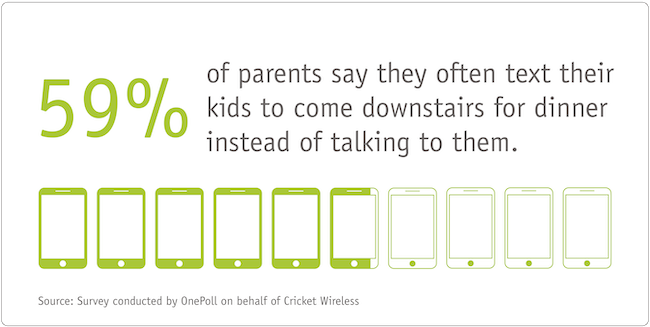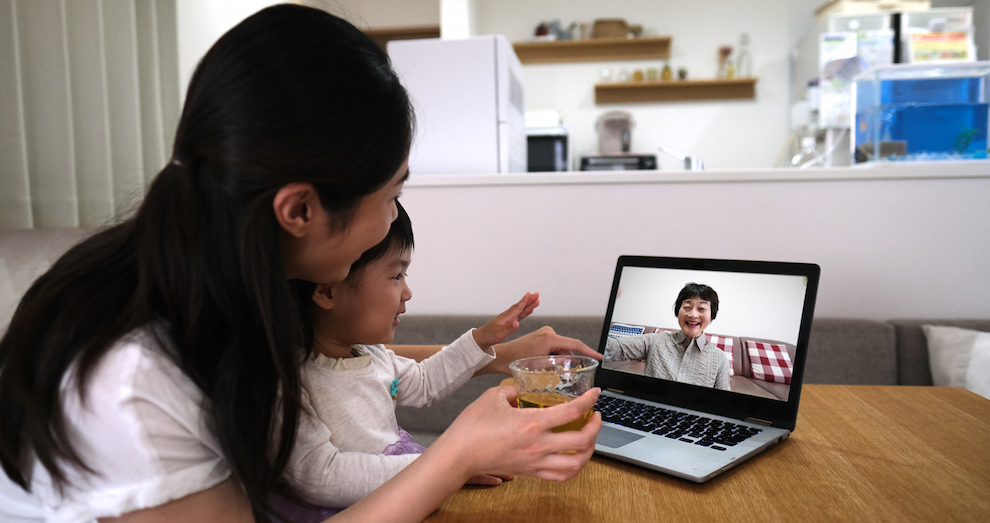Family (dis)connectedness – understanding screen time
Editor’s note: Alisha Snow is an executive vice president at Smarty Pants, a U.S.-based strategic research and consulting firm.
With nearly half of all waking hours being spent on screens, and a heightened awareness of the mental health crises afflicting young people, we are seeing a proliferation of headlines about the negative impact of screen time, video games, social media and device usage on families. The news stories reflect the reality of parenting attitudes: over three quarters of parents are at least somewhat worried about their child struggling with anxiety or depression. And, technology is most commonly cited by parents as the core reason why some feel parenting is harder today than it used to be.
We also know that the integration of technology in families’ lives is pervasive and here to stay. Since 2005, Smarty Pants has been observing families in their homes, as they go about their daily lives. From being a fly-on-the-wall during family game night to tagging along for trips to the grocery store, we have witnessed a remarkable evolution in how people of all ages spend time with and connect with their spouses, parents, grandchildren, siblings and kids. Screen time is no longer simply for entertainment, work or school. Families have embraced their smartphones and tablets as key tools for communication and connection.
So, how has digital engagement affected family interactions including individual roles and identities and interpersonal communication styles? Who is digital engagement impacting the most? And how are new family dynamics shaping how we conduct research with families?
Screen time, from Boomers to babies
“My Nana is always asking Google. No matter what we are talking about, she loves to look it up.” – 9-year-old.
 With approximately half of 0- to 2-year-olds interacting with smartphones at some point during each day and 80% of those 60 years+ doing the same, digital consumption is no longer restricted simply to teenagers and their parents. Grandparents are sharing interesting videos or their daily Wordle streaks with their grandchildren. Tweens are asking their parents’ permission for new apps. Partners are reminding each other of appointments, meetings and carpools.
With approximately half of 0- to 2-year-olds interacting with smartphones at some point during each day and 80% of those 60 years+ doing the same, digital consumption is no longer restricted simply to teenagers and their parents. Grandparents are sharing interesting videos or their daily Wordle streaks with their grandchildren. Tweens are asking their parents’ permission for new apps. Partners are reminding each other of appointments, meetings and carpools.
Digital communication: Virtual hugs or digital diss
“He always sends me gifs or memes. Don’t tell him but I really have no idea what he is talking about.” – Mom of 15-year-old
Although the devices might be the same, the way different generations communicate using text, video and images can create misunderstandings and laughable moments. From the grandfather who always signs his texts “Love, Your Grandpa” to the 18-year-old who gets offended by his dad’s periods in text messages, digital communication has generational nuances and preferences. According to Adobe’s 2022 Emoji Trend Report, Gen Z emoji users are more likely than other generations to agree that they use emoji differently than the intended meetings. And, nearly half of U.S. emoji users have sent an emoji that was misinterpreted or taken out of context. At best, the crossed wires result in a chuckle but sometimes the impact is a forgotten school pick-up, hurt feelings or a sense of not being heard.
Constant connection
“Even when he was in Amsterdam, I could find him!” – Dad of 22-year-old about Life 360
Families have grown accustomed to feeling connected to each other throughout the day – whether they are oceans apart or at home, together. In fact, 59% of parents say they often text their kids to come downstairs for dinner instead of talking to them.

From quick check-ins to gaming together from afar to using location tracking apps, the ubiquity of device usage has enabled families to feel continuously connected. The connection provides reassurance to caregivers. It helps aging family members feel less alone. And, it satisfies everyone’s needs for instant support, whether it's a quick question about plans for dinner or a more meaningful update on a school lockdown drill.
ME-dia: Family entertainment habits
“When we are watching TV, I’m usually on Instagram on my phone.” – 30-something about watching TV with her partner
Having personal control over your own entertainment and information is hard for family members of all ages to resist. With the average global family having more than six connected devices, viewing options abound. The growth of SVOD with personalized channels for each family member, along with the use of YouTube, TikTok and social media in general for video consumption has powered an individualization of the home video viewing experience. Although some studies have shown an uptick in TV co-viewing for parents of young children, media consumption for most other ages and life stages continues to diverge into solo patterns.
Studies have also shown prolific multitasking among adults in the U.S. with e-mail, social media, gaming and even watching other videos on the list of activities people do while watching TV. These dynamics result in pursuit of individual interests, divided attention and fragmented family entertainment habits. It also results in fewer arguments over who gets to be in charge of the remote control.
Engaging content fuels personal pursuits
“She got really interested in chickens and then started to do lots of research about what it would be like to own chickens, get our own eggs, etc. I was excited that she did so much work to figure it out. So, guess what? Now we have chickens!” – Mom of 13-year-old
Fueled by access to engaging content related to any imaginable subject, individual family members are exploring topics that become deep interests and passions – regardless of their family’s involvement in those pursuits. This personal pursuit of passions and connection to others with shared interests has evolved individuals’ sense of identity. And, who teaches who is often inversed … with kids having adult-like interests and depth of knowledge at younger ages – they have become the experts who can then teach their parents about topics like cooking, dog breeding and even investments.
As Smarty Pants explained in our “Why Niche Matters” presentation at the Quirk’s conference in LA and our recent Kidscreen article, “How Children’s Passions & Personas are Changing:”
“Through TikTok communities, YouTube videos and even Google searches, kids have found more information about – and more people who share – their (often niche) interests, in turn fueling their confidence in that interest.”
Many are even creating entire identities around those interests, whether as a Furry, an E-boy, a Baller or any number of other "new"/niche personas.
What does all this mean for market research?
Knowing how intertwined tech usage is to family dynamics is essential for unearthing drivers, identifying influences and truly understanding how families interact with brands. As insights consultants who pride ourselves on developing approaches for getting up close and personal with families, we suggest keeping the following in mind:
- Embrace digital tools to reach families and capture in-the moment feedback.
- Continue to use in-person approaches as a primary way to observe the physicality and context cues that impact dynamics.
- Dial up engagement during questionnaires and activities and structure bite-sized data dips.
- Consider how communication styles – including emojis, gifs and even punctuation – can impact interpretation of research questions, activities and response options.
- Remember that parents might not be the gatekeeper of family expertise – some decisions, influences and information are kid-led.
- Increase touchpoints to include communication tools, family location tracking, media-sharing and text-based approaches in studies of family dynamics.
